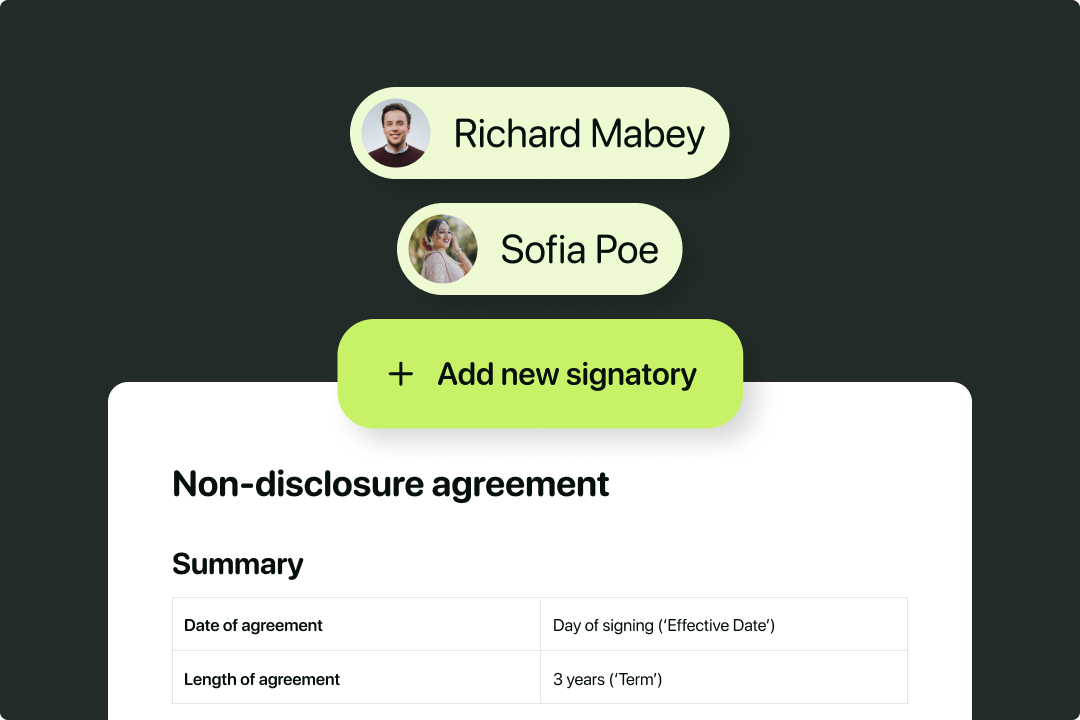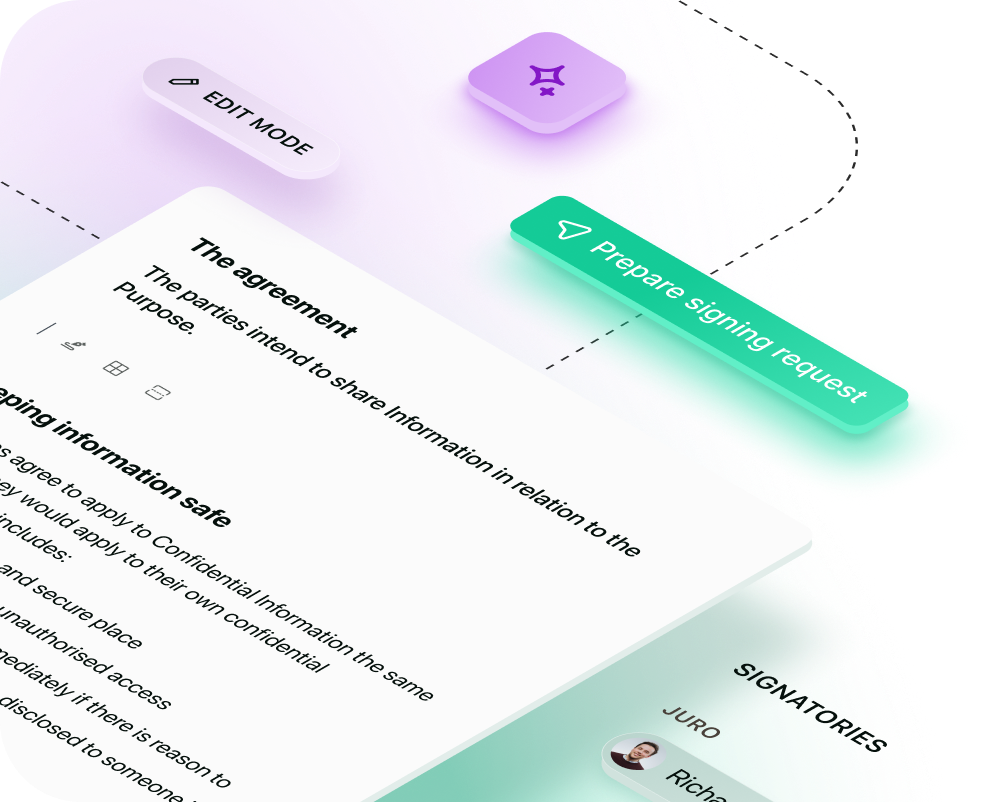Solutions
Customer Support
Resources


The sound of a pen scratching across paper once marked the final step in closing a deal.
But today, that ritual feels almost nostalgic. Contracts now move at digital speed — drafted, reviewed, and signed in seconds. So why do some businesses still insist on waiting for the ink to dry?
This guide explores what a wet ink signature is, when it’s still legally required, and why most modern companies are leaving it behind.
A wet signature (also called a wet ink signature) is a handwritten mark made with a pen on a physical document. The “wet” refers to the ink — a holdover from the days when contracts could only be made official by signing them in person.

Traditionally, both parties to a contract would sign copies of the same paper document before it became enforceable.
While not every agreement legally requires a signature, one is almost always used to prove intention and consent — whether in ink or electronically.
To “wet sign” a document means to physically sign it by hand — often with multiple parties taking turns to sign, scan, or courier pages back and forth.
Before eSignature tools existed, this was the only way to execute a contract. Meetings were scheduled, paper packets circulated, and the final document might take days (or weeks) to come together.
Today, this manual ritual has all but disappeared, instead replaced by digital workflows where signatures happen instantly.
There was a time where wet ink signing was the default for businesses, and senior stakeholders would need to group in a meeting room to finalize the terms with a physical signature.
That isn’t the case anymore.
Today there’s a faster and more efficient way to sign contracts. Instead of putting pen to paper and have an in-person meeting, businesses can sign contracts electronically instead. This alternative is called an electronic signature.
In other words, parties can use software to electronically ‘sign’ a document and fulfil the requirements needed to make it enforceable. And it seems this is becoming the new default, with global eSignature transactions ramping up from 89 million to 754 million in just five years.

But wet ink signatures do still have a place in the modern world. After all, a handwritten signature of some kind is still needed in various jurisdictions and situations. Let’s explore these scenarios now.
A wet ink signature remains necessary when laws, regulators, or specific industries demand physical proof of consent. Common examples include:
But these instances are certainly the exception, not the rule. Almost all countries accept the validity of eSignatures, and in most geographies the governments are pushing the digitization of document signing and processing due to the efficiencies it unlocks. More on that now.
Wet signatures slow everything down.
Printing, signing, scanning, and mailing paper contracts adds hours (sometimes days) to routine workflows. The friction gets worse at scale — especially for companies handling hundreds of contracts per month.
One CEO we've interviewed once spent half a working day each week signing hard-copy contracts by hand. After switching to Juro, those signatures happened digitally — dozens at a time — in seconds.
Beyond wasted time, wet signatures also come with higher risk:
{{quote1}}
This is a poor use of anyone’s time, but particularly the kind of person likely to be a business’ authorized signatory - typically a CEO, CFO or similar senior figure.
Through Juro’s end-to-end contract automation solution, businesses are able to ditch the wet signature and sign dozens or hundreds of contracts electronically, simultaneously, with one click.
If you're looking to do the same thing, hit the button below. If not, read on to find out more about wet ink signatures.
Juro embeds contracting in the tools business teams use every day, so they can agree and manage contracts end-to-end - while legal stays in control.

The main difference between a wet signature and an eSignature is that a wet ink signature involves an individual writing their signature onto a physical copy of a contract, typically in black pen.
Meanwhile, an electronic signature is created digitally on a device, without the need for pen and paper. Here's a more detailed breakdown of the key distinctions:
A wet signature uses ink and paper. A dry signature is created electronically — no ink, no physical document.
Usually not. Most contracts can be signed electronically, unless they fall under specific categories (like notarised or real estate documents).
Simply sign a physical document with a pen. Your handwritten mark becomes the wet signature.
A live signature is a real-time signature — whether drawn digitally with a stylus, uploaded as an image, or created through an eSignature tool.
Yes. You can sign on paper, then scan and upload it. But this adds extra steps — using an eSignature tool is far faster and more secure.
Yes. The term “wet ink signature” just emphasises that the signature was made with pen and ink on a physical surface.
The wet signature rule refers to legal or regulatory requirements that certain documents must be signed by hand — for example, property transfers or notarised contracts.

Sofia Tyson is the Senior Content Manager at Juro, where she has spent years as a legal content strategist and writer, specializing in legal tech and contract management.
Sofia has a Bachelor of Laws (LLB) from the University of Leeds School of Law where she studied the intersection of law and technology in detail and received the Hughes Discretionary Award for outstanding performance. Following her degree, Sofia's legal research on GDPR consent requirements was published in established law journals and hosted on HeinOnline, and she has spent the last five years researching and writing about contract processes and technology.
Before joining Juro, Sofia gained hands-on experience through short work placements at leading international law firms, including Allen & Overy. She also completed the Sutton Trust’s Pathways to Law and Pathways to Law Plus programs over the course of five years, building a deep understanding of the legal landscape and completing pro-bono legal volunteering.
Sofia is passionate about making the legal profession more accessible, and she has appeared in several publications discussing alternative legal careers.

Juro embeds contracting in the tools business teams use every day, so they can agree and manage contracts end-to-end - while legal stays in control.
Book your demo